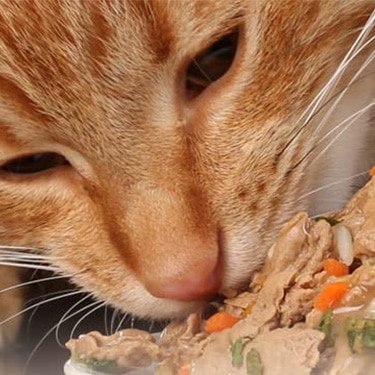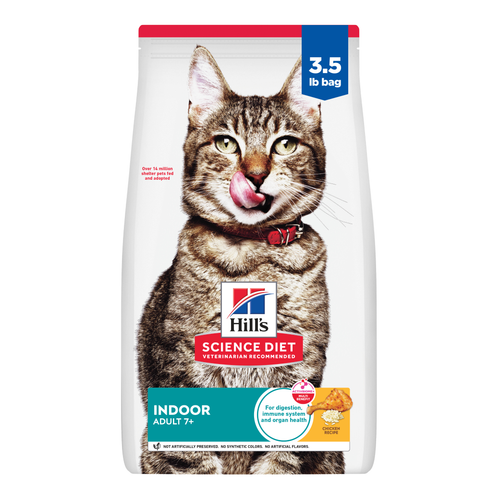
-
Find the right food for your petTake this quiz to see which food may be the best for your furry friend.Find the right food for your petTake this quiz to see which food may be the best for your furry friend.Featured products
 Adult Large Breed Chicken & Barley Recipe Dog Food
Adult Large Breed Chicken & Barley Recipe Dog FoodSupports healthy joints, lean muscle, and beautiful coat for large breed dogs
Shop Now Adult Chicken & Barley Recipe Dog Food
Adult Chicken & Barley Recipe Dog FoodSupports lean muscle and beautiful coat for adult dogs
Shop Now Hill's Science Diet Adult Chicken & Beef Entrée Dog Food
Hill's Science Diet Adult Chicken & Beef Entrée Dog FoodChicken & Beef Entrée in a delicious loaf with complete & balanced nutrition to help keep adult dogs active and healthy
Shop NowFeatured products Senior Vitality Adult 7+ Tuna & Vegetables Stew
Senior Vitality Adult 7+ Tuna & Vegetables StewImproves Everyday Ability to Get Up & Go
Shop Now Adult Tender No Corn, Wheat, Soy Chicken & Vegetables Stew Cat FoodShop Now
Adult Tender No Corn, Wheat, Soy Chicken & Vegetables Stew Cat FoodShop Now Adult Turkey & Liver Entrée Cat Food
Adult Turkey & Liver Entrée Cat FoodPrecisely balanced nutrition with the delicious taste of minced turkey & liver to help fuel the energy needs of cats during the prime of their life
Shop Now -
Dog
- Dog Tips & Articles
-
Health Category
- Weight
- Food & Environmental Sensitivities
- Urinary
- Digestive
- Joint
- Kidney
-
Life Stage
- Puppy Nutrition
- Adult Nutrition
- Senior Nutrition
Cat- Cat Tips & Articles
-
Health Category
- Weight
- Skin & Food Sensitivities
- Urinary
- Digestive
- Kidney
-
Life Stage
- Kitten Nutrition
- Adult Nutrition
Featured articles What Is Littermate Syndrome? Pet Adoption Guide
What Is Littermate Syndrome? Pet Adoption GuideLearn more about littermate syndrome in dogs and cats and how to successfully navigate adoption and early socialization processes.
Read More The Science Behind Our Love for Pets
The Science Behind Our Love for PetsLearn the scientific reasons why we have such strong connections with our pets, and what science says about the love between humans and our furry friends.
Read More How to Properly Mix Wet & Dry Pet Foods
How to Properly Mix Wet & Dry Pet FoodsAn Orange cat eating from a bowl filled with mixed food
Read More -


Are you a pet parent in need of a DIY cat perch to keep your cat off the top of the bookcases?
Well, you're in good company! No one knows better than cat owners that their fluffy friends love to survey their territory from the highest heights. If this sounds like your cat, it may be time to make your own cat perch.
Why Do Cats Love Heights?
Why are cats so attracted to heights? Vetstreet explains, "Staying in higher places was most likely a behavior that, for smaller cats, was associated with an increased probability of survival." While indoor cats don't need to worry about coyotes or hawks, they do like the security that a high perch offers.
One inexpensive way to create a new space is to redesign an already existing area as a "cat only" zone. You could purchase a cat tree, but these can be expensive and take up a lot of floor space. A perch, however, is a great option because it's low-profile and, if you live in tight quarters, it allows you to take advantage of vertical space. You can create perches by attaching sturdy wooden boxes (such as wine cases, but never flimsy cardboard boxes) or bracketed shelves to the wall, or, if you're adventurous, even go as high as the ceiling and add a catwalk along the perimeter of a room. As always, while you're brainstorming ideas, keep your fur baby's safety in mind. Despite the popular cat myth, kitties don't always land on their feet.
Cats can be mischievous creatures while they're home alone, which may increase their desire to climb up on furniture and nose around, so creating an entertaining space just for your cat will help alleviate the boredom. "When your cat is ready to play, a special space that has been set up just for that purpose is important," says PetMD. "Even if you don't have an extra room to devote as a cat haven, a corner of a room or a window will suffice." One such option is to take advantage of one of her favorite nooks. If she is drawn to a particular bookshelf (one that is easily accessible to her), remove items from the shelf, and then line it with a blanket. Cats love to hide in small spaces, so you'll get two-for-one: height and security.

Why not make your own cat perch? Although you can buy a perch, it's more fun and fulfilling to customize one! This particular DIY cat perch is simple, yet it holds more weight than other designs. It's attached to the wall and has a leg on the floor for extra support, so it won't tip over, unlike a free-standing or under-supported perch. Importantly, the design allows for a sturdy wall-mounted perch that can be permanent or temporary, meaning you don't have to drill holes in your wall.
This DIY cat perch repurposes materials in your home and takes approximately 30 minutes to construct.
What You'll Need
- Two pieces of scrap wood plank (particle board works, too)
- Measuring tape
- Pencil or pen to mark wood
- Four to six wood screws
- A hand saw (or cut-off if you have one and are comfortable using it)
- A drill
- Furniture tacks or a staple gun
- Hammer
- Masking tape
- A bath towel (a blanket or carpet remnant also can work, depending on the type of material your cat prefers)
- Removable picture mounting strips



Tasty Tips
How to Make It
- One piece of wood, which will not be cut, will be the platform on which your kitty sits. The other will be cut to form a leg and a shorter piece that will mount to the wall.
- First, measure on the wall the height from the floor to the bottom of the window sill or another desired spot to determine where you want the platform to be.
- Mark the spot on the wood where you want to saw (tip: place masking tape along your cut line to ensure a straight line and will make your pencil marks visible).
- Cut the leg/wall mount piece of wood to a length that allows the platform to be positioned at the desired height on the wall. Using a leg piece that is as wide as the platform makes a nice hiding spot for your kitty.
- Drill evenly spaced pilot holes in one end of both the leg and wall mount pieces and corresponding holes in the top of the platform. The holes on the platform that will be used to connect the wall mount piece should be positioned so that the wall mount piece will be flush with the back edge of the platform. This will assure the platform sits tight against the wall.
- Attach the leg and wall mount piece with wood screws.
- Center and stretch the towel on the top platform, making sure the material does not extend over the back of the perch (this will ensure that the perch sits flat against the wall). Tuck excess material underneath the top platform and secure in place with furniture tacks or wood glue.
- Attach removable adhesive picture mounts to the back side of the perch, on the far edges, and position the perch against the wall (yes, this will hold a large cat!). For a more permanent solution, attach the perch to the wall with screws through a wall stud or by using wall anchors.
- Finally, position the perch in place and press firmly against the wall to assure the adhesive tabs are firm.
Placing a perch under a window just adds to the fun! In addition to giving your cat her own spot, by placing it in front of a window, you'll provide her with hours of entertainment, from bird-watching to spying on the neighbors.
No matter its location, your kitty will love the security of this DIY cat perch, especially if you use an extra-fluffy towel to cover the top platform. She may try to sneak up onto the fridge every so often, but chances are, she'll be too busy lounging on her new digs. This is also a great option to keep her off of areas like tables and countertops if you can provide perches in rooms that you or your cat spend a lot of time in. If you're cooking, she likely just wants to know what is going on and be close to you. A kitchen perch will allow her to see what is going on, while staying out of your way while you cook.


Christine O'Brien is a writer, mom, and long-time cat parent whose two Russian Blues rule the house. Her work also appears in Care.com, What to Expect, and Fit Pregnancy, where she writes about pets, pregnancy, and family life. Find and follow her on Instagram and Twitter @brovelliobrien.
Related products

Precisely balanced nutrition with the delicious taste of minced turkey & liver to help fuel the energy needs of cats during the prime of their life

Supports energy level and beautiful fur in mature indoor cats

Improves Everyday Ability to Get Up & Go

Related articles

Discover which cat toys games your feline friend might like, and how they are great sources of exercise. Explore our library of articles to learn more.

Learn how to litter train a kitten with this guide to potty training, including when to start litter training kittens and troubleshooting tips.

When you adopt a cat, you don't just gain a best friend; you also save her life. Here's why getting a cat from a local animal shelter makes so much sense.

Discover how to train your cat, starting with very basic first steps that both reward good behavior and discourage the bad.

Put your cat on a diet without them knowing
Our low calorie formula helps you control your cat's weight. It's packed with high-quality protein for building lean muscles, and made with purposeful ingredients for a flavorful, nutritious meal. Clinically proven antioxidants, Vitamin C+E, help promote a healthy immune system.
Put your cat on a diet without them knowing
Our low calorie formula helps you control your cat's weight. It's packed with high-quality protein for building lean muscles, and made with purposeful ingredients for a flavorful, nutritious meal. Clinically proven antioxidants, Vitamin C+E, help promote a healthy immune system.


